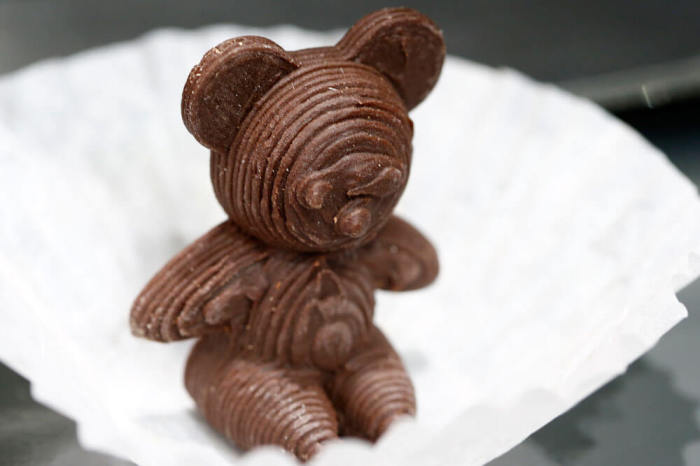Futuristic Food: 3D Print Your Pizza, Spaghetti Sauce and Gaucamole

Descriptions of food typically include the use of adjectives such as delicious, mouth-watering, scrumptious, delectable, flavorful, appetizing, succulent and (for those over-the-top indulgent desserts) decadent. But Natural Machines and 3D Systems, makers of 3D food printers Foodini and ChefJet, would like consumers to add inventive and futuristic to the list.
A food printer?
The growing number of devices for 3D food printing has the potential to completely alter the way in which consumers view food and food preparation. But the Foodini and its brethren aren't the same as the 3D printers being used in the automotive and aerospace industries. Those printers generally run at one speed and print plastic. The Foodini is programmed similarly, but it works with numerous ingredients and prints edible creations. Instead of ink cartridges, 3D food printers utilize food capsules. There are a surprising number of 3D food printers currently on the market or poised to enter the market. Some of these include the Choc Creator from Choc Edge, the Discovery Extruder from Structur3D, the 3D Fruit Printer from Dovetailed, and the Original Food Printer from Fab@Home.
Ease of use
In a recent 3Ders.org article, a Natural Machines spokesperson said, "Foodini's main purpose is to take on the difficult and/or time-consuming parts of food preparation that often discourage people from creating homemade food." The Foodini offers pre-loaded and pre-tested recipes, or users can design their own. If using a pre-loaded recipe, the user selects the recipe using the touch-screen interface or a separate internet-connected device and will be directed on ingredients to add to the stainless steel food capsules. For example, with Foodini's recipe for pizza, the dough and sauce – the more difficult parts to make from scratch – are printed, but the cheese, spices and toppings are added by hand.
The current iteration of the Foodini does not actually heat or cook food, which means those who want a hot meal still will need to turn on a stove or oven. However heating and cooking are features expected in future versions. Bocusini, a 3D food printer startup partially funded on Kickstarter, recently introduced a prototype that includes a heating feature. The company has told users they can expect to enjoy a reduction in cooking prep time as well as less time spent on cleanup.
What about variety?
Desserts, sweets, candies and chocolates are the most common and perfected items currently produced by 3D food printers. However, menu items are quickly expanding. Pancakes, cheese, biscuits, pasta, spaghetti sauce, potatoes, some seafood and even ice cream have been printed. Earlier this year, Chef Mateo Blanch from La Boscana restaurant in Lleida, Spain, created the first 3D printed five-course meal. The menu included items such as caviar cookies with lemon and strawberries as well as hummus and guacamole. Thus far, Chef Blanch is only one of a handful of Michelin-starred chefs using the 3D food printing technology.
Try it, you just might like it
Printing food significantly shifts the consumer-food relationship. In a world in which technology has been embedded in almost every aspect of life, some believe 3D food printing is a natural progression. It uses more naturally grown foods, such as algae, sprouts, vegetables and dried fruits, rather than meat, which is a boon for vegetarians and vegans. Also because much of the printed food does not require cooking, shelf stability is increased and there is no need for refrigeration or freezing.
However, until heating and cooking becomes more commonplace, 3D food printing doesn't offer much in terms of texture. The consistency generally seems to be varying degrees of paste. Those who enjoy the crunchiness, graininess, creaminess or crispness of each bite may want to delay trying 3D printed food until the process is a bit more refined.
Pricing for 3D food printers varies greatly, ranging from $200 to $5,000. Not everyone will agree that 3D food printing is the next great invention, but it's hard to deny that these printers are game-changing instruments that could impact consumer behavior and provide a potentially valuable alternative in food preparation and storage.




























